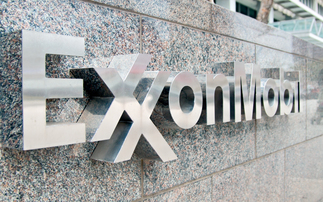The World Bank's International Development Association issued its first bond in April 2018 - and investors jumped at the chance to support its poverty-fighting programme
The International Development Association (IDA), a member of the World Bank Group, has almost 60 years of experience in providing finance to some of the world's poorest countries. From funding female entrepreneurs in Ethiopia to providing more than two million households in Bangladesh with rooftop solar, the IDA is at the coalface of sustainable development around the world.
But after decades of funding its development work solely through its donors, its 173 member countries, 2016 marked a turning point.
Every three years member governments gather at IDA to agree the replenishment rates and consider the institution's priorities for the coming years. The first meeting of IDA18, held just a few months after the Sustainable Development Goals (SDGs) were agreed at the UN, and just weeks after the Paris Agreement on climate change was struck, presented IDA stakeholders with a "paradigm shift" in the role of international development. Suddenly climate risk, poverty reduction, and sustainable development were in the global spotlight like never before.
Meeting the Sustainable Development Goals (SDGs) is expected to cost between $5tr and $7tr. But in 2016 total official development assistance peaked at just $142.6bn. Looking at the scale of the challenge ahead back in early 2016, IDA made a momentous decision: to seek extra cash from the capital markets for the first time. "Recognising that more than public money can achieve needs to be done and financed in order to achieve the ambitious SDGs, there was a discussion around bringing in this additional group of stakeholders, the private investors, so that the IDA can do more," recalls Heike Reichelt, head of investor relations and new product development at the World Bank.
It was a bold step, but IDA was confident its offer would attract considerable interest, Reichelt tells BusinessGreen. "One of the reasons why the SDGs have been so warmly embraced by pretty much everyone is because there is this realisation that it's not just governments, it's not just government agencies," she explains. "The private sector has a huge role to play, and the private sector wants to play a role. So it was a very opportune time to look again at IDA's financing model and think about how it can tap private capital."
Tackling SDG 1 in particular - the target for eradicating poverty - is a key focus for IDA and was a major motivator behind its decision to launch an issuance. "The SDGs are great and I really like them… but no poverty is in all of them," points out Reichelt. "No hunger, good health, quality education, gender equality, clean water and sanitation - they all move towards no poverty." She explains IDA's twin goals since its inception are to eradicate poverty and boost shared prosperity around the world: "So if you look at SDG1 - no poverty - that's basically everything we do."
So with the decision made to reach out to the capital markets to boost IDA's ability to help the world's poorest, Reichelt and her team set off on a 'roadshow' around the world's financial capitals to gauge market interest. The ground had already been prepared by the rise of green and climate bonds, with private investors becoming rapidly more comfortable with impact investing as a mainstream 'liquid' investment opportunity, the term for an investment that can be readily traded and converted into cash.
Reichelt explains: "There are investors who are focused on impact, focused on the purpose of their investments, and until green bonds impact investing [the market] was all very small, not liquid, type projects. But through green bonds investors have realised that they can have impact by purchasing liquid products."
This has attracted more risk-averse investors into the market, says Reichelt. "If you think about impact investing, often times it was investors investing in a particular project in a particular country," she explains. "So those investors are taking the risk that [one project] won't succeed and they won't get repaid... But in the case of bonds, you issue bonds in the capital markets and it's a liquid, tradeable product, a bit like stocks, you can buy and sell them."
This fitted more neatly with the kind of investors the World Bank traditionally engages with, she says. "It is investors that are looking for high quality, so in the Triple A rating [category], which is the best credit rating you can get," she explains. "Those are investors that look for safety - so central banks, but also pension funds, asset managers and others."
Meanwhile, interest in ESG investments is on the rise as the risks of inaction on issues like climate risk become ever starker, and governments around the world push green finance as a growth industry. Investors aren't immune to the reputational bump a well-timed investment in sustainable development can offer either.
So with more larger, cautious players entering the impact investing market, IDA was in a prime position to tout its role as a safe investment bet for doing good. Its 60-year history of loans helped it secure a Triple A rating from the ratings agencies, and its bumper $160bn capital reserve also helped to reassure investors the financials of the issuance were sound.
"[IDA] had a super strong credit, had a good financial product, and then its purpose, its mission, was good," recalls Reichelt. "So it was a very compelling story when we went to see investors."
"Compelling" translates into an inaugural bond issue that raised $1.5bn for IDA's lending programme and was heavily over-subscribed. "We had initially intended to only do $1bn but it was so hard to cut the allocations because it was 4.5 times oversubscribed," reveals Reichelt. "So it was a really tough session, we were talking to investors and some of them really wanted the bonds, so we really had to either cut entirely or give a lot less in bonds to them than they expected."
Unsuprisingly then, IDA is already planning another bond issuance before its financial year ends in June, eyeing a further capital raise of $1.5bn through a mix of benchmark bonds and private placements. From there Reichelt predicts it will grow steadily, to around $10bn within a decade.
The success of IDA's inaugural issuance represents not just a step change in its strategy, but speaks volumes about the latent demand from the private markets to invest in ways which promote sustainable development. The growing international pressure to eliminate poverty and build a greener, more prosperous society, together with the increasing acceptance of impact investment as a mainstream liquid investment opportunity, have cultivated fertile ground for ethical investments.
Delivering the SDGs will involve billions - perhaps trillions - of investment dollars. But when presented with the right opportunity, it seems private investors are ready and willing to help the world get there.









